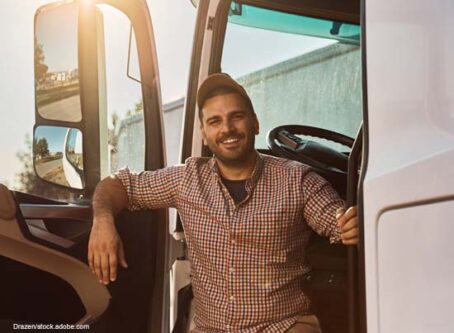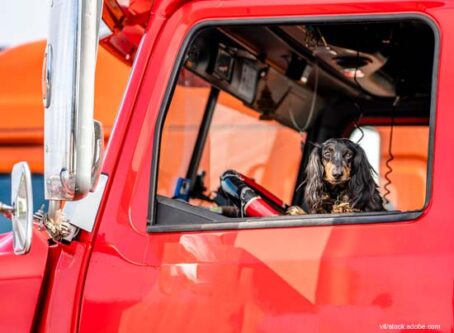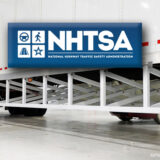Here come the driverless trucks – or not
They’re at it again. Or maybe I should say they’re still at it.
I’m talking about self-driving truck developers predicting they will be operating autonomous trucks on public highways without safety drivers any day now. It has been happening for the better part of 10 years, but it never quite happens – at least so far.
This time around, competing developers Aurora and Kodiak have claimed they will have totally driverless units on the road before the end of this year, according to Transport Topics. Both have said their robot trucks will shuttle customers’ trailers roughly 240 miles between Dallas and Houston along Interstate 45, one of the lanes where both have been operating with safety drivers.
There’s a fair chance it will happen this time, if not by the end of this year, then early in 2025. So what will the dawn of driverless trucks in commercial use look like?
Maybe it will be a spectacle like the 2016 driverless run between Loveland and Fort Collins, Colo., with a trailer full of Budweiser beer – 51,744 cans of the stuff. That autonomous truck belonged to Uber, which was still developing driverless technology back then. Of course, there was a safety driver in the cab for the ride.
Uber’s Volvo truck was preceded and followed by company vehicles and the Colorado State Patrol for the entire 120-mile run. They left enough space around the truck so they would not be seen in most photographs of the event. Maybe we’ll see similar mini-caravans on I-45.
There may be no safety drivers for the first fully autonomous run, but I can’t imagine Aurora or Kodiak will simply wave goodbye to their first driverless trucks at one end of I-45 and wait patiently for more than four hours at the other.
I’ll bet there will be company vehicles behind or in front (maybe both) of those first driverless trucks. I wouldn’t be surprised if the Texas Highway Patrol also tags along, just in case.
Maybe Aurora or Kodiak will provide a bit of fanfare – say, coffee, doughnuts and speeches for the first run. Or maybe they’ll keep it low-key. They wouldn’t want to gain the world’s attention only to have the first truly driverless truck veer off the road and across someone’s rutabaga crop. If they’re really worried about the public’s reaction, maybe they’ll put one of those HOV-lane passenger dummies in the driver’s seat.
Whatever they do at the start of their robotic trailer shuttle service, neither company will be making money. They probably will be burning through investors’ money for a while as they get commercial operations going. If that happens, they will confront the unforeseen problems that plague virtually any kind of new business. For example, some loads will be more time-sensitive than others or one customer more important than another. They might have to hold scheduled departures for hot loads or substitute a preferred customer’s trailer on a run scheduled for another customer. That kind of thing creates headaches for LTL line haul operations and for sales departments.
If and when they iron out the operational bumps, they’ll probably learn that the huge cost savings they’ve promised won’t be as big as they’ve been boasting. Some customers probably will decide it’s better to pull their own trailer, keep their own schedule and have their own driver in the truck – and with their freight. For investors, driverless shuttles may not deliver the profits they anticipate.
Of course, there’s one potential event that could halt driverless operations immediately.
Driverless cars have been operating for a while in different U.S. locations. And a company named Gatik currently is running smaller autonomous straight trucks without safety drivers on shuttle runs for Walmart and Tyson Foods in Arkansas.
But no one has run driverless big trucks on U.S. interstates like I-45, where the speed limit along much of the road is 75 mph. It will be the first time totally robotic trucks operate at sustained highway speeds, and accidents at those speeds can be deadly.
In March 2018, an Uber self-driving car with a safety driver hit and fatally injured a woman in Tempe, Ariz. The safety driver had been looking at her phone at the time and ultimately was blamed for the accident, but Uber’s autonomous system had failed, as well. The public reaction led to the immediate suspension of its operations and eventually led Uber to quit the driverless vehicle business altogether. Uber sold its driverless assets to Aurora.
According to Aurora and Kodiak, their driverless trucks are prepared for just about any conceivable scenario. But in real life, the inconceivable happens on a regular basis. And no matter how good their engineering, one of their trucks ultimately will be involved in a fatal accident.
No matter whose fault it is, the media will cover it, and the public will be spooked by driverless vehicles. Depending on the severity of the accident and the casualty count, shuttle operations could be suspended or even shut down altogether – especially if it happens in the first few months of operation, before the companies can establish any kind of safety record.
But if the I-45 shuttles do manage not to kill anyone, other driverless routes could quickly pop up elsewhere, most likely in the state of Texas. Aurora has said it intends to start a shuttle between Dallas and El Paso, for example.
Clean rollouts in Texas could encourage other states to greenlight driverless runs – though only in the South, where autonomous trucks have been operating with safety drivers for years. Affordable driverless technology is not ready for the winter weather up North, and that will limit driverless truck deployments nationwide for a long time to come.
On the other hand, Aurora and Kodiak may carry on what has become a kind of trucking technology tradition: predicting deployments that don’t happen. We’ll just have to wait and see. LL









